Rocky Mountain National Park is one of Colorado's largest national parks which supports on average over three million visitors a year, making it one of the most visited parks in the country. Rocky Mountain National Park is located within the Front Range of Colorado and covers 265,769 acres of wilderness. The park was established in 1915 when President Woodrow Wilson signed the Rocky Mountain National Park Act.
The park is known for its diverse wildlife, a multitude of different ecosystems, and scenic views such as those on top of Longs Peak, the only "14er" in the park at an elevation of 14,259 feet. The mountains that make up the park, along the rest of the Rocky Mountains, were uplifted during the Laramide Orogeny starting around million years ago and ending roughly 35 million years ago. More recently repeated glaciation events during the last several million years eroded thousands of feet of rock and sediment. This significant erosional period proceeded to carve the region, shaping the peaks and valleys we see today.
Wide U-shaped valleys leading broad cirques, steep arêtes, and tall mountain peaks are characteristic features found throughout the park. Rocky Mountain National Park's 415 square miles encompass and protect spectacular mountain environments. The park is a bucket-list destination for many, with crystalline alpine lakes, jagged mountain peaks, rolling valleys and abundant wildlife. Gateway to Rocky Mountain National Park, Estes Park, CO makes for a great base to explore 300 miles of the park's hiking trails and perhaps even spot elk, moose, and deer.
Take the tour shuttle to town from Estes Park KOA and get close to the east entrance of the park, Lake Estes, and plenty of outdoor and kid-friendly activities. The sheer number of things to do in Rocky Mountain National Park never fails to amaze visitors. Tourists can enjoy its 355 miles of beautiful hiking trails year-round, and depending on the season they can take summer strolls, winter treks, or intensive hikes. There are also many other activities visitors can enjoy, including watching herds of elk and other wildlife, camping, fishing, horseback riding, and wilderness adventures.
While the park is best known for its steep terrain, accessible trails have been constructed in particularly scenic areas. Nearly 80 percent of the trail network is also open to horseback riding. Sombrero Stables offers guided rides and has a location in Estes Park and two stables within the park at Glacier Creek and Moraine Park, both on the east side. In winter, traverse the trails on cross-country skis or snowshoes, or sled in the designated area.
Other possibilities include fly-fishing, rock climbing, stargazing and wildlife viewing. Nearly 80 percent of visitors access the park from the east side. The 20 percent who come through the west entrance, Fall River, come via Grand Lake or Granby, and most take Trail Ridge Road (U.S. Highway 34).
The highest continuously paved road in the U.S. is known appropriately as the "Highway to the Sky," as it crosses the Continental Divide at 12,183 feet. The road usually opens Memorial Day weekend; snow forces its closure by early to mid-October. A traffic-free alternative is the one-way-only Old Fall River Road. Open mid-July to mid-October, this dirt road evokes nostalgic national park vibes and features plenty of waterfalls, wildlife and spectacular Fall River Valley views while delivering you to the top of Trail Ridge. The park is situated between the towns of Estes Park to the east and Grand Lake to the west.
The eastern and western slopes of the Continental Divide run directly through the center of the park with the headwaters of the Colorado River located in the park's northwestern region. The main features of the park include mountains, alpine lakes and a wide variety of wildlife within various climates and environments, from wooded forests to mountain tundra. With lofty mountain peaks, hiking trails that lead to alpine lakes and waterfalls, wildlife, and a scenic drive along one of the highest roads in the USA, Rocky Mountain National Park is a joy to explore. In this post, learn about the best things to do in Rocky Mountain National Park with tips on how to have the best experience. Trail Ridge Road, which bisects it east-west and reaches an elevation of 12,183 feet ; it is one of America's most scenic highways. The Continental Divide National Scenic Trail also passes through.
Popular activities are snowshoeing and cross-country skiing in winter and hiking, fishing, rock climbing, and horseback riding in summer. Several of the visitor centres have cultural and natural history exhibits. Rocky Mountain National Park is one of the highest national parks in the nation, with elevations from 7,860 to 14,259 feet , the highest point of which is Longs Peak.
Trail Ridge Road is the highest paved through-road in the country, with a peak elevation of 12,183 feet . Sixty mountain peaks over 12,000 feet high provide scenic vistas. On the north side of the park, the Mummy Range contains a number of thirteener peaks, including Hagues Peak, Mummy Mountain, Fairchild Mountain, Ypsilon Mountain, and Mount Chiquita. Several small glaciers and permanent snowfields are found in the high mountain cirques. Rocky Mountain National Park Day Hikes – Day hikes in Rocky Mountain National Park hiking are among our most popular adventures. You'll enjoy a full day of great Rocky Mountain National Park hiking.
Some people don't always have a free week to explore the Rocky Mountains, but that doesn't mean you can't still enjoy some of the best the Rocky Mountains have to offer. We make it happen with these one-day guided tours right into the heart of the Continental Divide. You'll see waterfalls, wildlife, wildflowers, alpine meadows and more, all under the watchful eye and guidance of our professional trip guide. Devote an entire day to driving one of America's most magnificent scenic byways. Bighorn sheep, marmots and rock ptarmigans frequent the meadows and crags, so keep a sharp eye out.
Experienced and acclimated hikers can park at Milner Pass and hike 4.5 miles along the Continental Divide to the summit of Mount Ida at 12,880 feet. Of the road's many scenic overlooks, Many Parks Curve is a must stop. The name refers to its vistas of Estes Park, Horseshoe Park and Moraine Park. You'll also see the snowcapped peaks of Mount Lady Washington, Mount Meeker and RMNP's crown jewel, Longs Peak.
From the Alpine Visitor Center, a quarter-mile-long paved path gains 200-some feet of elevation and delivers lovely alpine views. Rainbow Curve pullout has vault toilets and from the curve you can spot a handful of 13ers, including Hagues Peak and Mummy Mountain. The Park offers 415 square miles of exciting outdoor activities including hiking, camping and wildlife viewing at any time of year, plus snowshoeing, cross-country skiing and sledding in the winter. We recommend a trip along Trail Ridge Road up to the Continental Divide and over to Grand Lake.
It's the highest, continuous paved road in the United States reaching an elevation of 12,183 feet. Hiking might be the number-one pastime in Rocky Mountain National Park, but you could argue that this is really a climber's park, thanks to massive cliffs that dominate its high-altitude peaks. There are nearly 500 established climbs, most of which are alpine affairs that require big days with long approaches. The bulk of the climbing is traditional, and much of it requires several pitches and descents that are way sketchier than the ascents. Longs Peak has the most established routes, ranging from 5.4 to 5.12.
You can even find destination-worthy bouldering in the park's central Chaos Canyon, which sits near Emerald Lake at 10,000 feet and has at least 100 problems, with something for everyone. Once you're roped up, expect a 5.6 climb with a little of everything—jugs, cracks, corners, and a short scramble to the peak, where a grand view of the gorge lies below. The Colorado Rockies offer phenomenal year-round outdoor adventure.
However, from a strictly hiker perspective, the best times of year are summer and fall. Colorado also thaws out more quickly than its northern siblings and so the "summer" begins earlier. Great hikes can be had beginning in June and the wonderful summer temperatures last through August.
In September, fall begins to creep in, and with it a truly magical transformation in Colorado. By early to mid November the mountains are becoming less hospitable, but for the hardier backcountry travelers, this time of year is still prime time. By mid November winter is normally setting in and the backcountry becomes a home for winter recreational enthusiasts, sleeping bears, and hardy mountain creatures.
A destination in its own right, Estes Park feels more like a base camp where you can stay and play. Bordering RMNP'S eastern edge, the town is less than a 10-minute drive from the Beaver Meadow Visitor Center and Fall River Visitor Center entrances and a half-hour from the Wild Basin entrance. It's also surrounded by less crowded, non-park wilderness spaces, including Roosevelt and Hermit Open Space. Both are dog-friendly and allow recreational opportunities that are off-limits in a national park, such as mountain biking, off-roading and non-permit wilderness camping.
The easy, 3.6-mile round-trip Kruger Rock Trail in Hermit Park Open Space rewards hikers with incredible views over Estes Valley and into the national park. For off-roading fun, Estes Park-based Wildside 4x4 Tours offers guided trips that explore the beauty of Roosevelt National Forest. En español | Even by Colorado standards, Rocky Mountain National Park boasts an embarrassment of riches. Within the park's 265,769 acres, you'll find 150 lakes, 450 miles of streams, over 160 trails and more than 100 peaks rising above 11,000 feet. Alpine tundra, cascading waterfalls and ponderosa pine forests create a breathtaking backdrop for year-round adventures. One of America's premier wildlife viewing destinations, the park is home to bighorn sheep, black bears, bobcats, coyotes, eagles, elk, hawks, moose and mule deer.
Whether you take in the awe-inspiring views from along Trail Ridge Road in the summer or venture into the diverse and beautiful expanse of varied, wild terrain throughout the year. Over 350 miles of trails offer endless opportunities to hikers, backpackers and horseback riders while off trail travel and climbing abound for hearty adventure seekers. In spring and early summer wildflower-lovers are never disappointed when the meadows and hillsides are splashed with botanical color. Anglers, bird-watchers and photographers discover the splendor that they traveled so far to find. Autumn visitors can relax among the golden aspens or enjoy the rowdy antics of the elk rut . During the winter, snowshoers and cross-country skiers revel in the white-blanketed tranquility of meadows and forests.
While many of the large animals, like grizzly bears and gray wolves, were extirpated from the park in the early 20th century, there are plenty of charismatic megafauna living within its borders. The park estimates its elk population to be between 600 and 800, while the bighorn sheep have reached a population of 350. Moose were reintroduced to the park in the 1970s and are thriving, especially in the meadows on the west side of theContinental Divide.
If you're lucky, you'll see plenty of wildlife from your car, but it's a hell of a lot more fun to spy animals while on foot. Bighorn sheep are active throughout the day and can often be seen posing on cliffs at higher elevations. They also like the salt deposits in the meadow around Sheep Lakes.
You'll see so many elk that you'll stop counting, especially on the east side, which is home to massive herds—you'll even see them in the town of Estes Park. If you're hiking in the subalpine areas of the park's central Bear Lake, keep an eye out for pikas and marmots, which scuttle around outcroppings throughout the forest. Black bears make a point of avoiding humans, so they're not often seen. Region 4 is the heart of the park with easy road and trail access, great views, and lake hikes including the most popular trails.
Flattop Mountain is a tundra hike and the easiest hike to the Continental Divide in the park. Crossing over Flattop Mountain, the hike to Hallett Peak passes through three climate zones, traversing the ridge that supports Tyndall Glacier and finally ascending to the summit of Hallett Peak. If you want to explore a rustic winter wonderland, you'll be in the perfect place for cross-country skiing during your winter RV excursion to Rocky Mountain National Park. You'll coast along serene freshly fallen snow through alpine wilderness against the backdrop of awe-inspiring mountain peaks. The best area for cross-country skiing is the one located on the western side of the park where the snow is deeper. Hidden Valley Snow Park is one of the most popular spots where you can head out on cross-country skiing trails.
There is parking available at the three visitors centers, in the trailhead parking lots, and in the campgrounds, if your plans include overnight accommodations. Parking for RVs and large vehicles may be limited depending on the parking lot, especially during the peak season. Another option is to park outside of the national park and take shuttles into the park during the summer months.
You can park your RV at the Estes Park Visitor Center or at a lot near Town Hall in Estes Park. If you're finding parking to be overcrowded, you can head over to the less crowded west side, since 80 percent of visitors come through the east side entrance. Rocky Mountain National Park is best known amongst RVers for its awe-inspiring mountains including the Hallett Peak, Deer Mountain, and, the tallest mountain, Longs Peak.
This enchanting wilderness is also full of picturesque bodies of water from Sprague Lake and Lily Lake to Calypso Cascades and Alberta Falls. The Rocky Mountain region has a rich history since it was originally settled by Native American tribes and later by gold prospectors and early railroad pioneers in the 1800's. You can get a taste of the park's heritage with a visit to the early 20th-century ranch at Holzwarth Historic Site.
Another stop during your RV excursion to this amazing national park should be at one of its three visitor centers, where you can learn all about the area's natural history. Popular activities include all lengths and difficulty levels of hiking trails, fishing, mountain and road biking, camping, backpacking, mountain climbing, scenic drives, and stargazing on clear nights. The majestic Rocky Mountain National Park, home of some of the most beautiful mountains in the United States, is a place that visitors to Granby won't want to miss. People of all ages can enjoy countless activities in Rocky Mountain National Park, including breathtaking drives, hiking, horseback riding, and much more!
Travelers to Granby can access the park via the Grand Lake entrance, which is just a 20-minute drive from town. In the 1700s, the indigenous Ute Tribe inhabited the area now known as Rocky Mountain National Park. In 1803, the U.S. government completed the Louisiana Purchase, which included land that would later be turned into the national park. During the late 1800s a gold rush brought miners, ranchers, and homesteaders to Colorado.
By the early 1900s the area was known for its beautiful landscapes and abundant wildlife, and in 1915, Rocky Mountain National Park was officially named the 10th national park in the U.S. By the 1960s the park became extremely popular and management of visitors became a priority. Today, the park sees millions of visitors every year ranging from scientists, bird watchers, fishermen, campers, photographers, and day hikers. If you're coming from sea level, driving through the park on the first day might be a smart idea, says Patterson. "The number one reason people visit the park is for the scenic beauty and you don't need to hike to appreciate it," she says. Some of the best views can be appreciated from your car window via Bear Lake Road, Old Fall River Road and Trail Ridge Road.
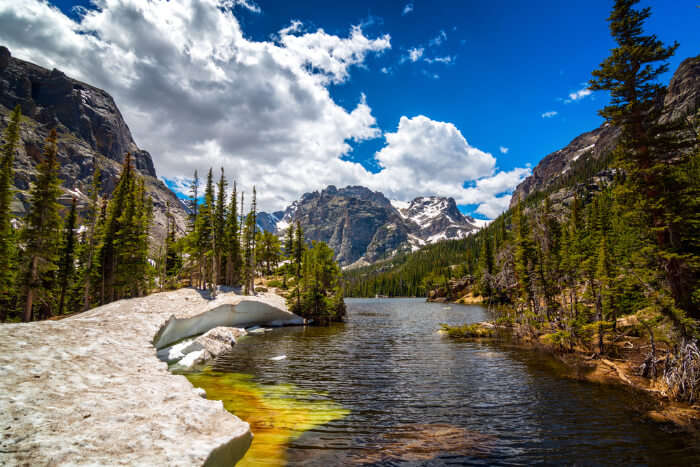







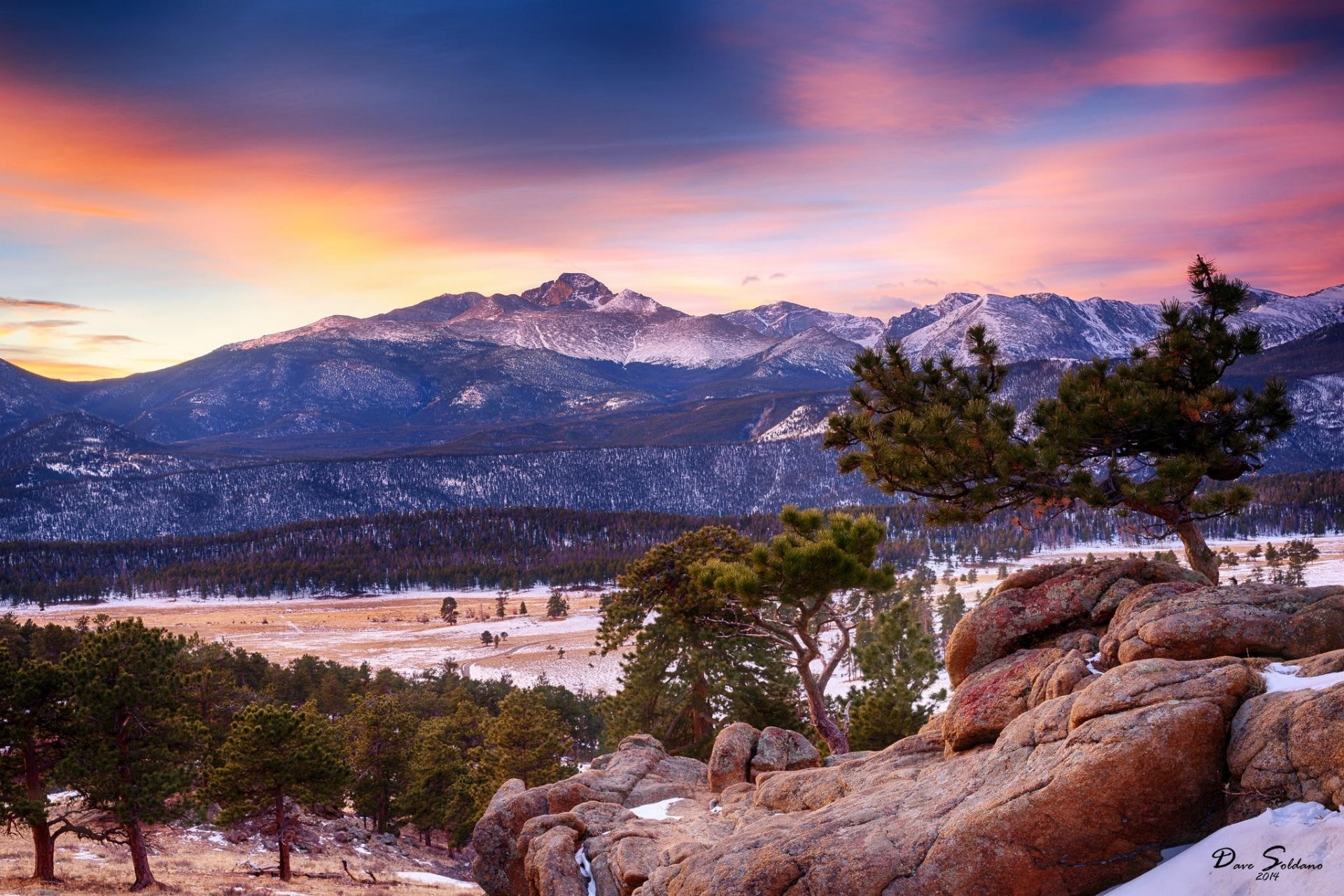


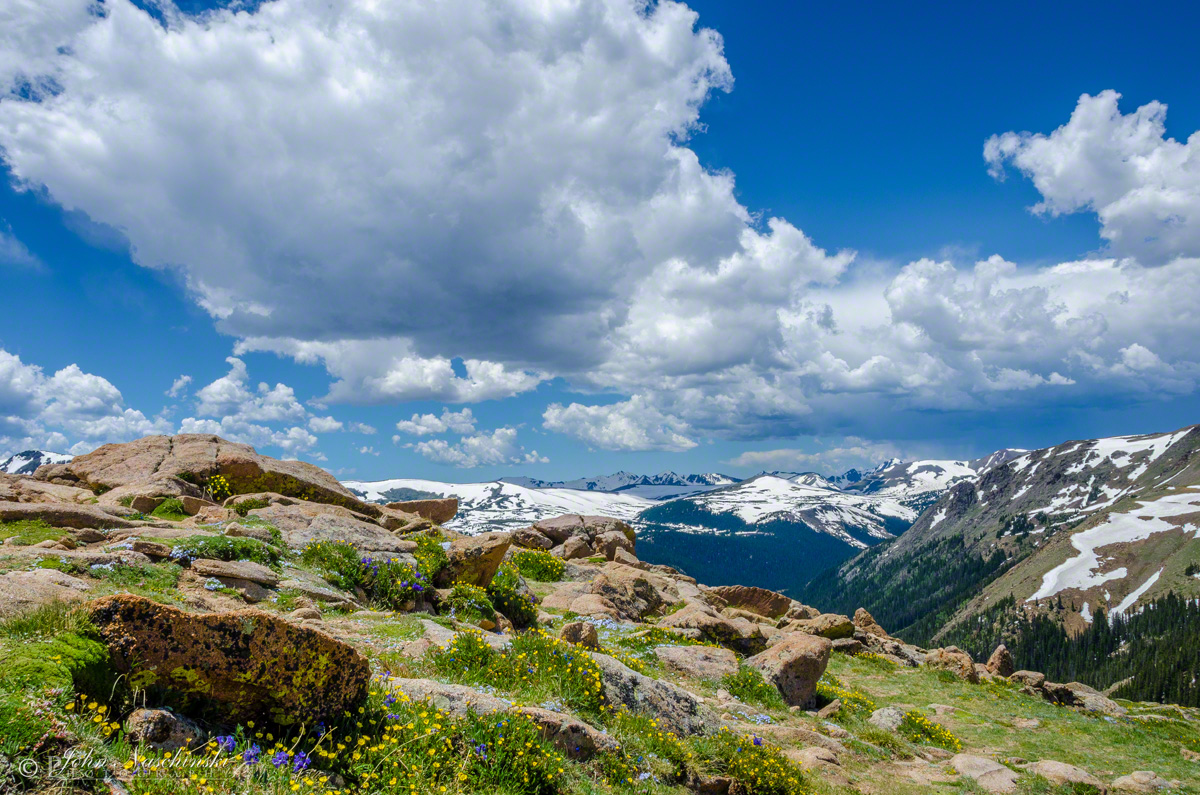
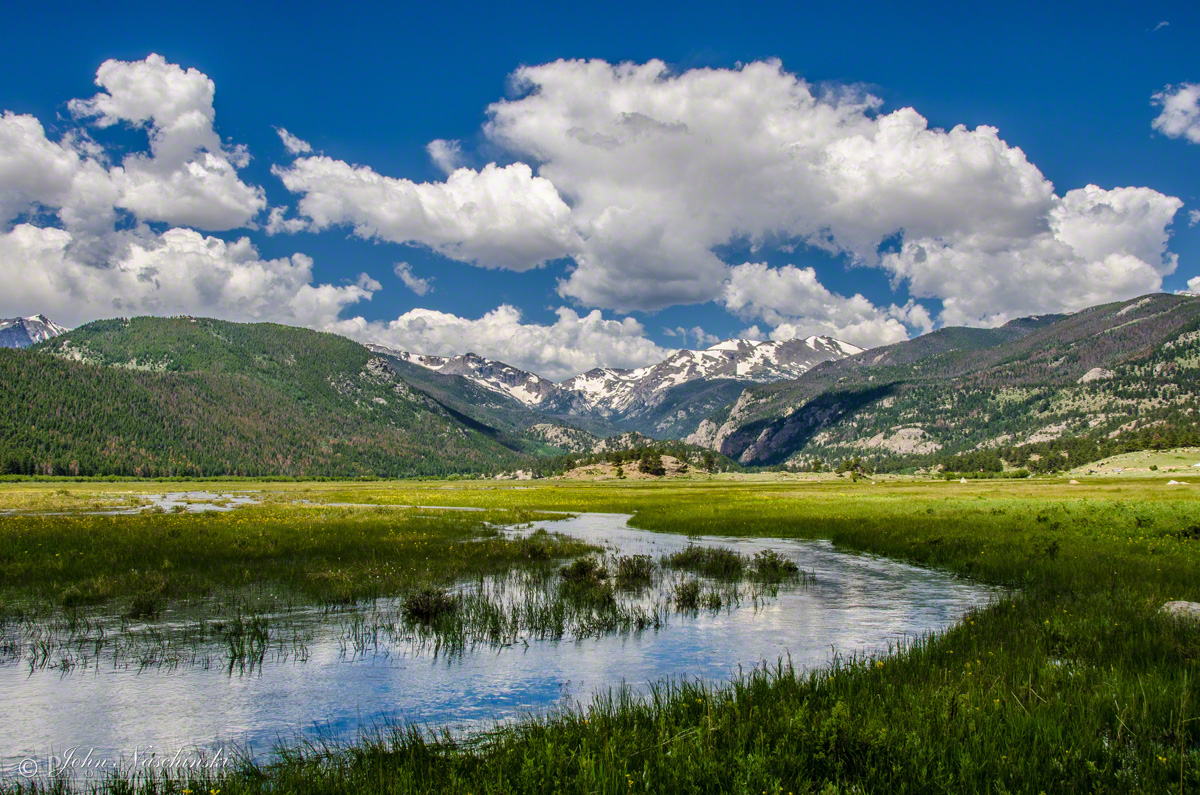




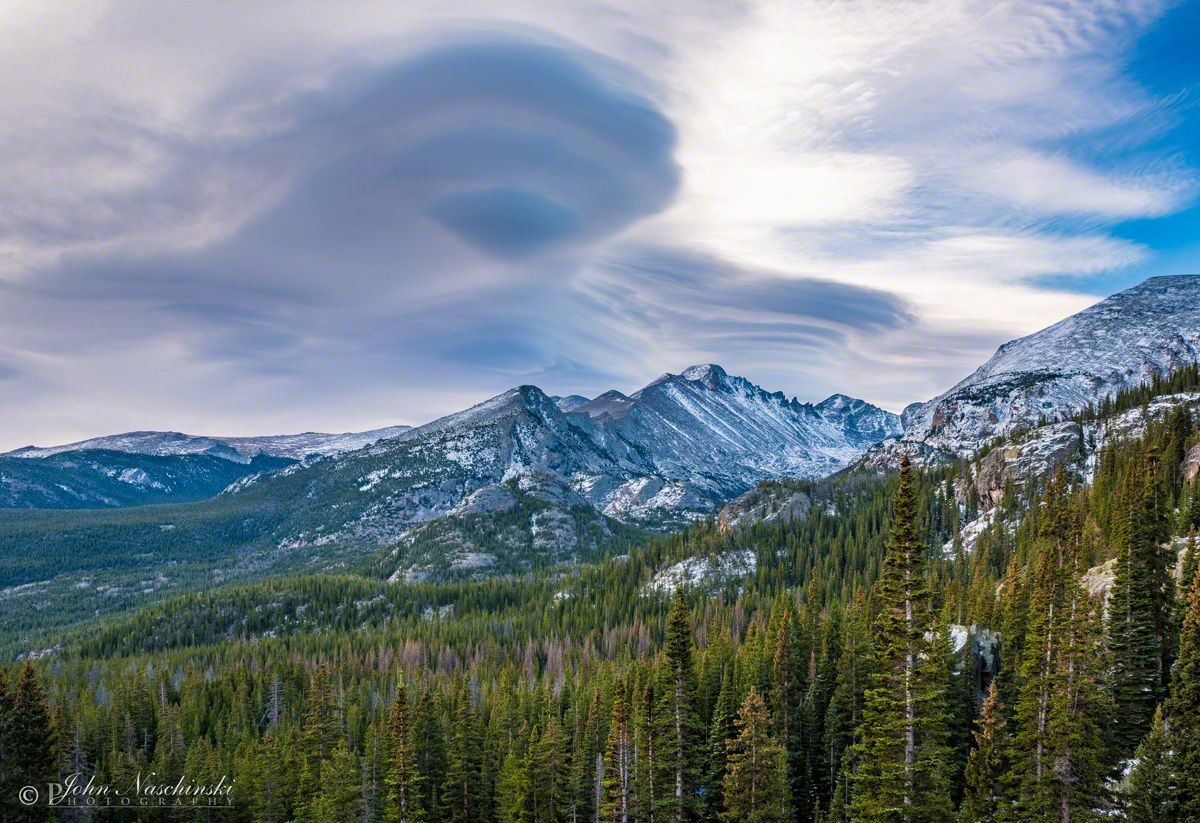


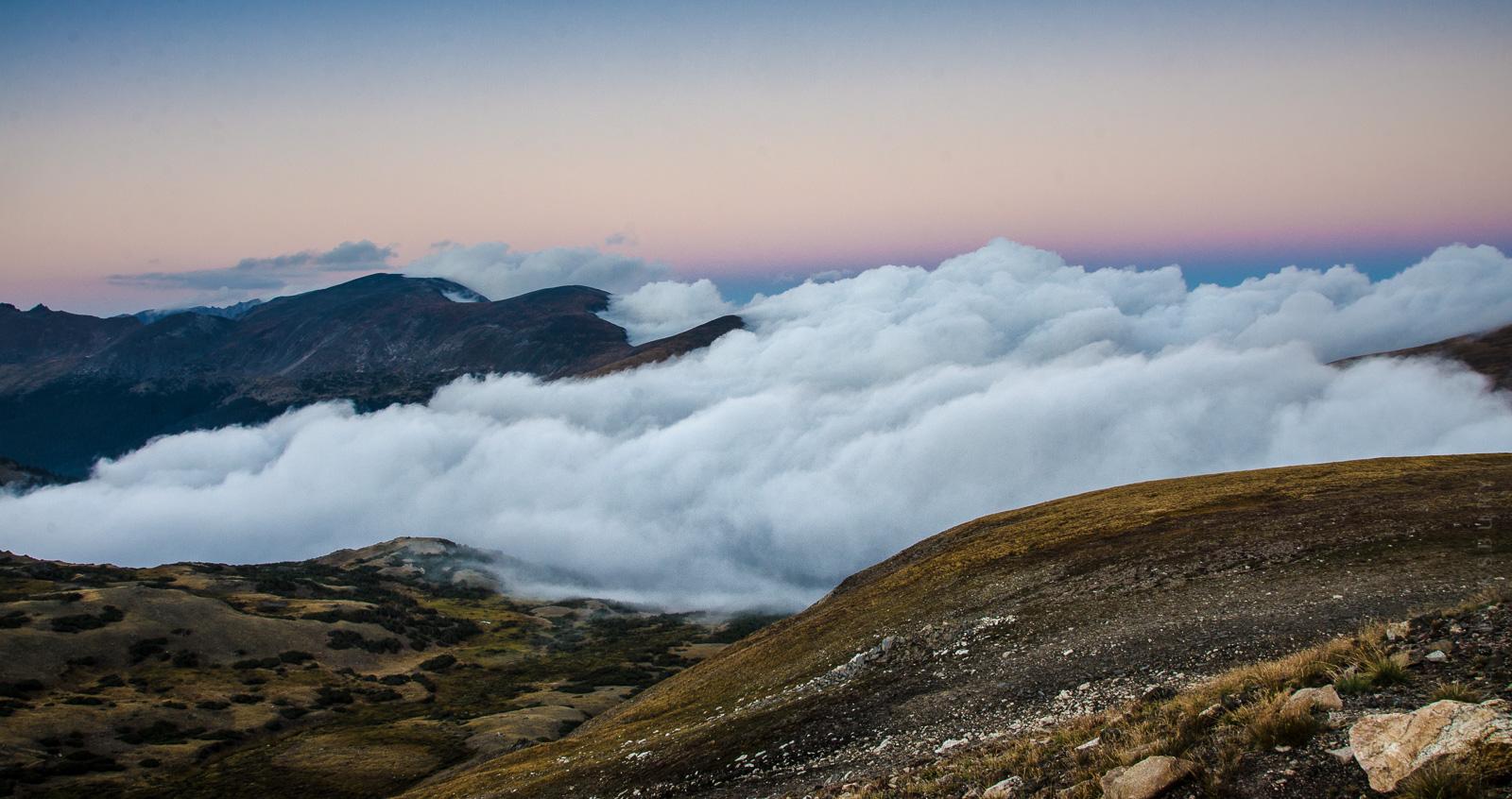
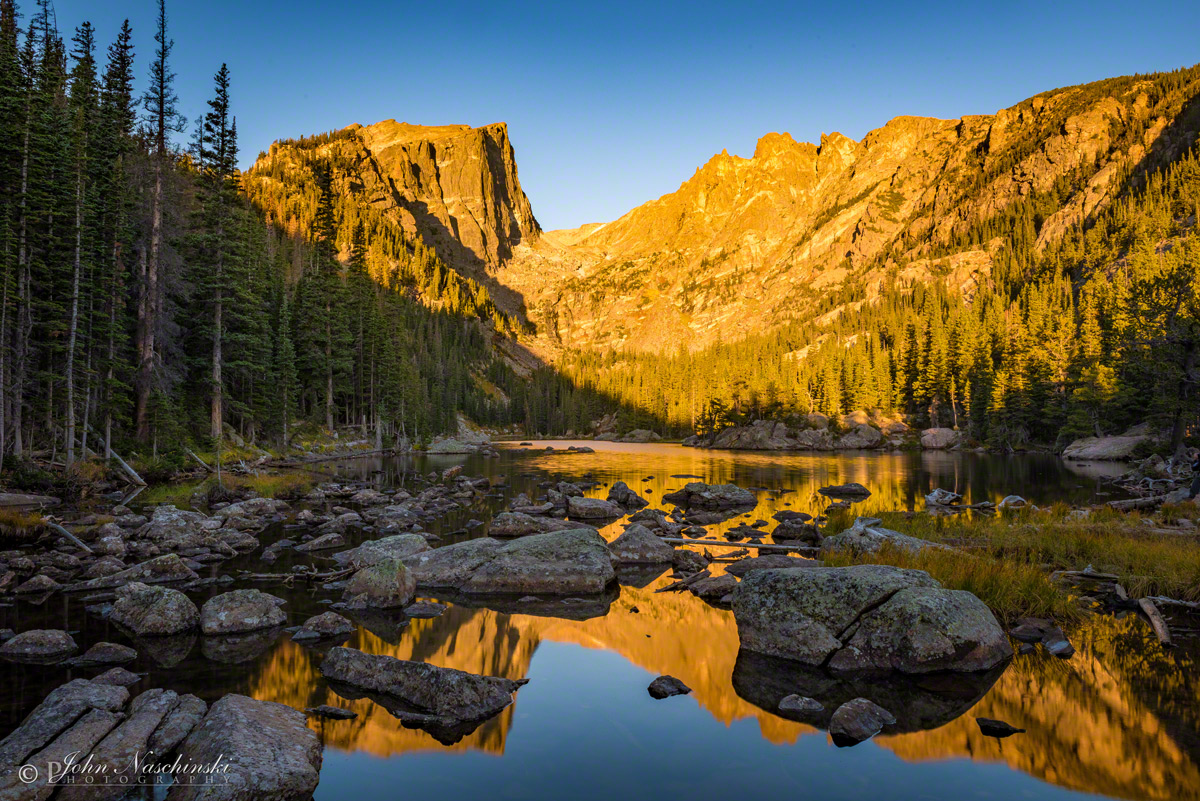
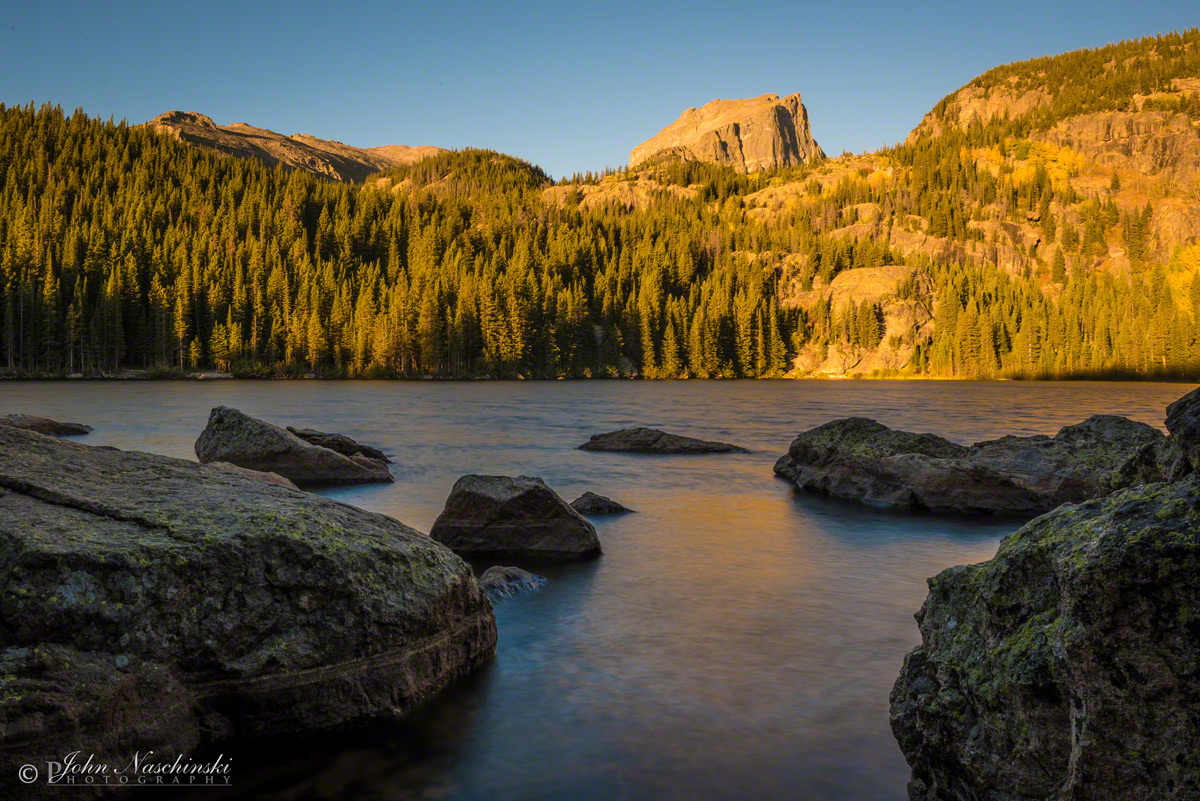


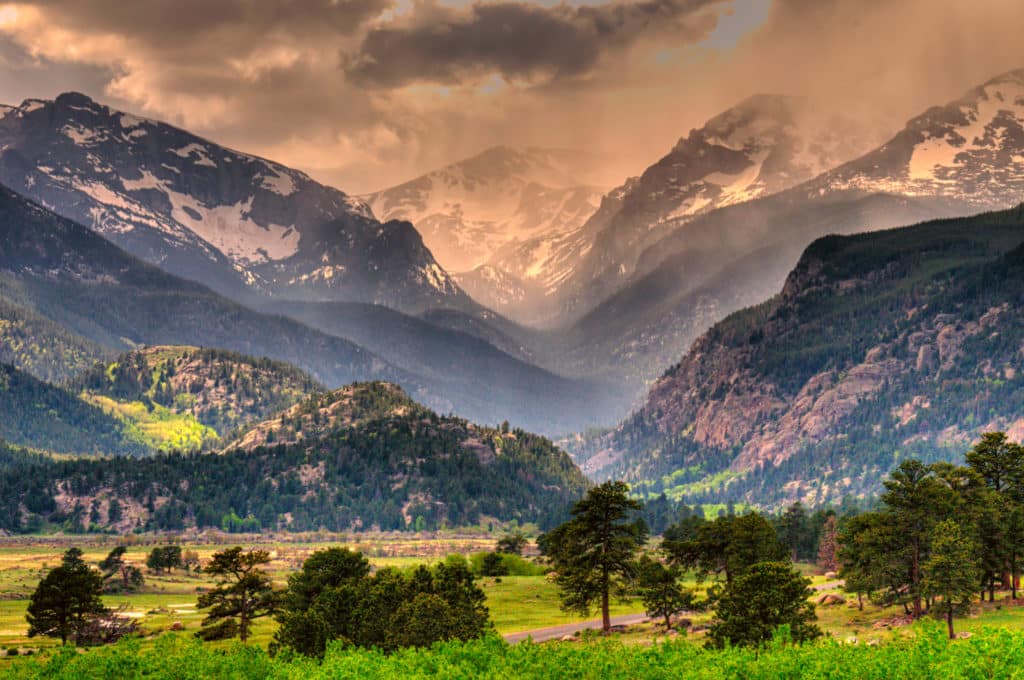

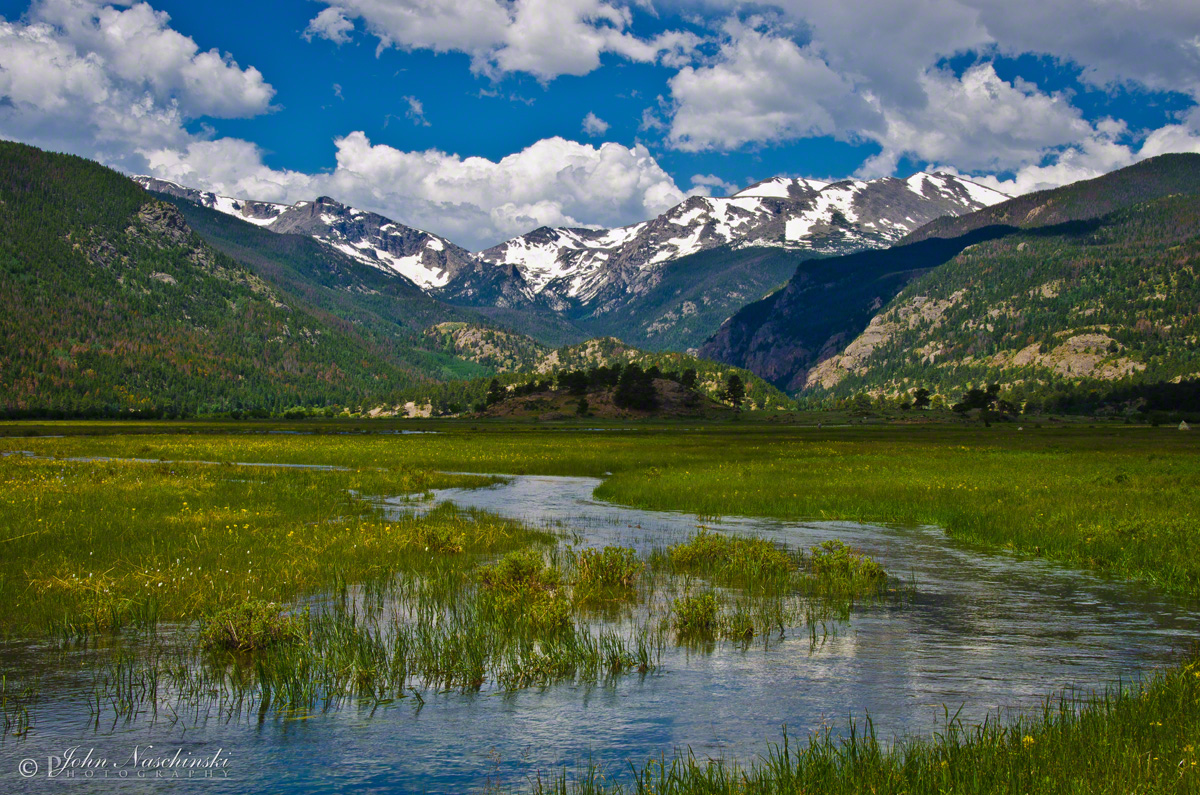

No comments:
Post a Comment
Note: Only a member of this blog may post a comment.